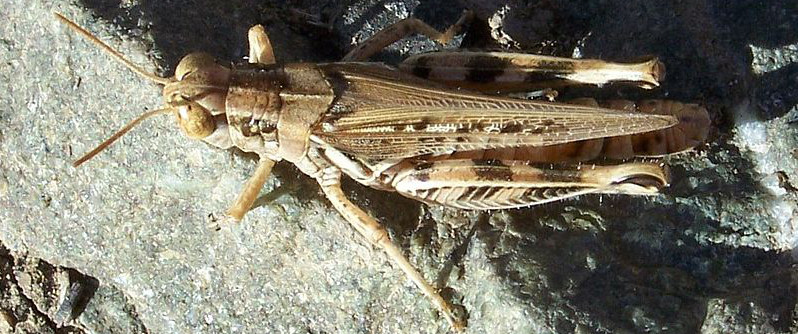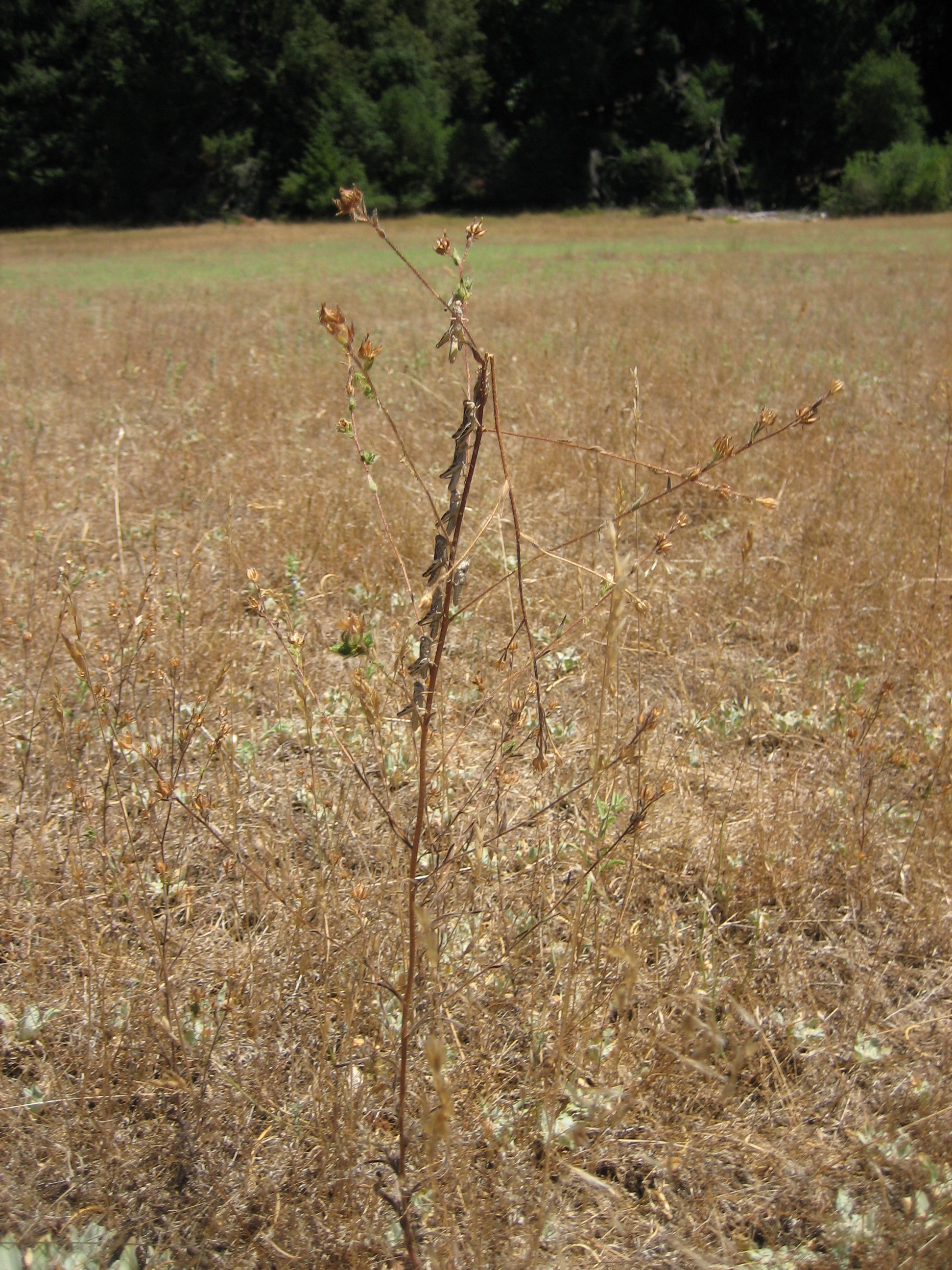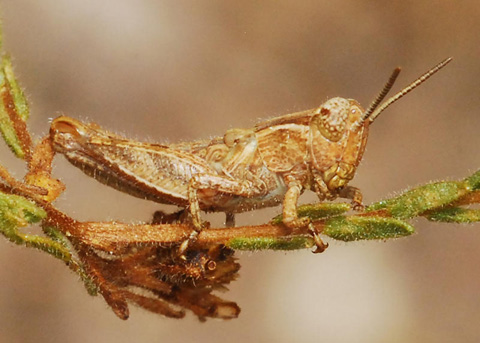
Interactions
With a common name like “devastating grasshopper”, this
insect’s interactions with other organisms are destined to be
primarily negative. The Melanoplus devastator wreaks most havoc
in its native habitat of the Sierra Nevada and coastal range of
California (Bentley and Philips 1992). California has earned the
title of wine country because it is home to many vineyards.
Melanoplus devastator nymphs hatch from their eggs in the late
spring and feed on young, green plants (Flint 1998). Californian
vineyards are common targets of the young grasshoppers, and they
use their mouthparts to remove sections of leaves from the
vineyard plants, causing damage to the property and profits of
vineyard owners (Flint 1998; Martin et al. 2012).

The grasshoppers are known to cause problems, not only in
vineyards, but also household gardens and other large crops
(Flints 1998). They seek young, green plants to eat and consume
the leaves, flowers, and young stems of the plants (Flint 1998).
The
Miniature Lupine is a flowering plant of California that
this grasshopper consumes.
Devastating grasshoppers prefer to consume barley grasses, wild
lettuce, and tarweeds; however, they are also known to feed upon
avocado plants, alfalfa, tomato plants, and marigolds (Martin
et
al. 2012). California hosts a wide variety of grass species
such as
California Oatgrass,
Soft Cheat, and
Cheatgrass.To fight destruction caused by Melanoplus devastator,
humans will often attempt to use screens, predators,
insecticides to fight off the invading grasshoppers (Flint 1998;
Bentley and Philips 1992).
Melanoplus devastator is not without predators. The insect is
infamous for causing widespread damage, but it is not invincible
to the threat of predation. Birds such as chickens and guinea
hens are used to act as predators to protect crops from damage
(Flint 1998). However, some natural aviary predators include
hawks, crows, and mockingbirds; these birds feed up the
grasshoppers in the adult and nymph stages (Shanklin et al.
2010). The
Western Screech Owl and
Steller's Jay also consume the devastating grasshopper. The
Western Screech Owl also is known to prey on the
Dusty-footed Wood-rat.
Birds are not the only predators of Melanoplus devastator,
the
Northern California Alligator Lizard is an amphibian
predator of the grasshoppers. Chordates that hunt the
grasshoppers include the
Spotted Skunk and the
Long-Tailed Weasel. Though they are at risk in their adult stages, the eggs of the
devastating grasshoppers are targets also targets especially for some local vertebrates,
beetles, and bee flies (Shanklin et al. 2010). The natural
predators of Melanoplus devastator help keep the population at a
manageable size.
In addition to na tural predators, parasites also attack the
grasshoppers and limit their population size. Some fungi have
been known to attack and live on the grasshopper; this
eventually causes the body to become soft (Shanklin et al.
2010). Melanoplus devastator occasionally consumes nematodes
eggs that hatch inside the insect, bury themselves into its
stomach, and kill the grasshopper (Shanklin et al. 2012).
Certain species of flies deposit their eggs onto the body of a
young nymph or adult, the eggs then hatch and the larva consume
the body of the grasshopper Shanklin et al. 2012). Clearly, with
the threats to the Melanoplus devastator, it is not an
invincible machine of destruction.
tural predators, parasites also attack the
grasshoppers and limit their population size. Some fungi have
been known to attack and live on the grasshopper; this
eventually causes the body to become soft (Shanklin et al.
2010). Melanoplus devastator occasionally consumes nematodes
eggs that hatch inside the insect, bury themselves into its
stomach, and kill the grasshopper (Shanklin et al. 2012).
Certain species of flies deposit their eggs onto the body of a
young nymph or adult, the eggs then hatch and the larva consume
the body of the grasshopper Shanklin et al. 2012). Clearly, with
the threats to the Melanoplus devastator, it is not an
invincible machine of destruction.
Go back to Reproduction
Home Page
Move forward to Facts